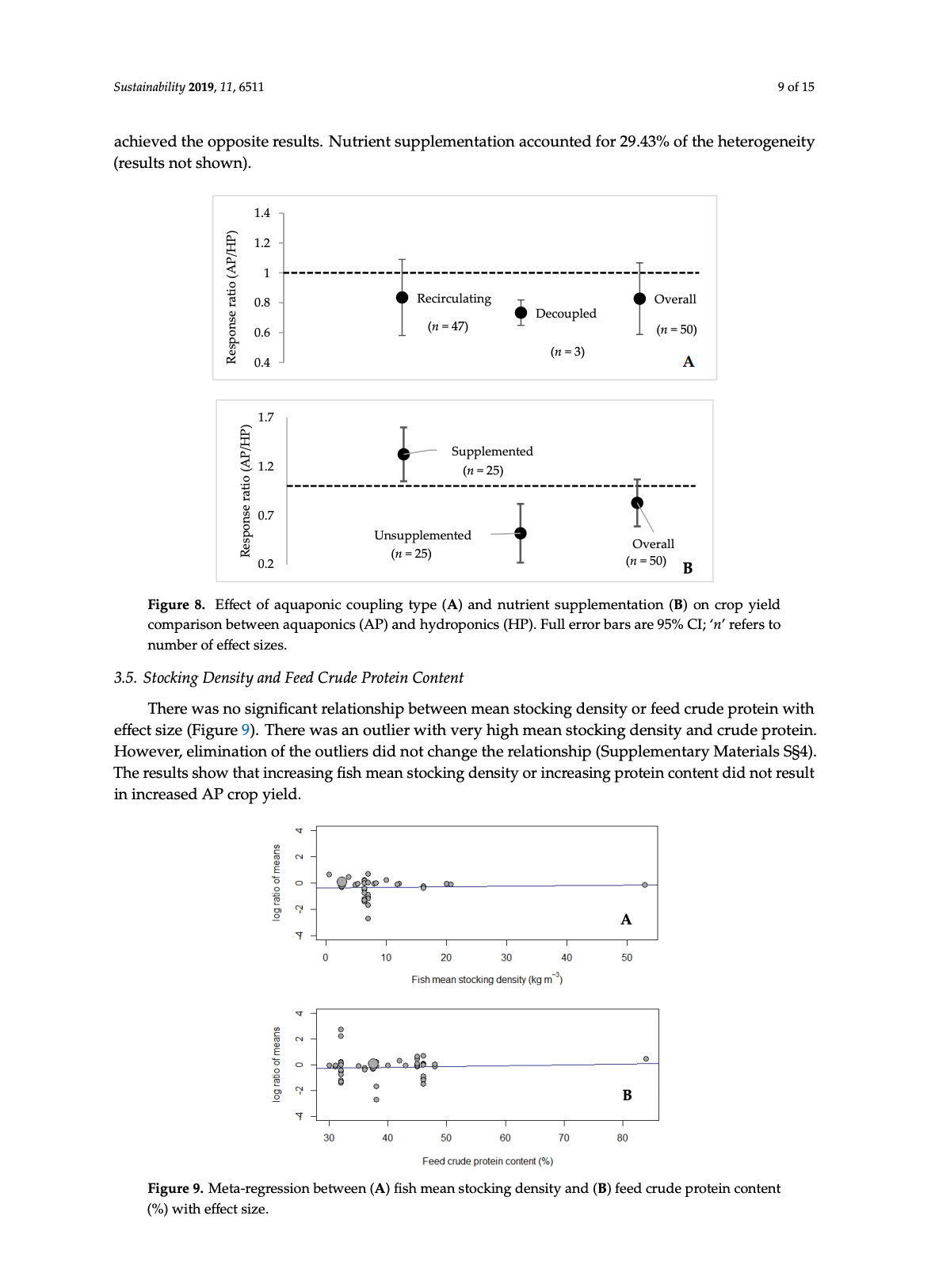Keyword: Hydroponic System Type

Ayipio, E., D. Wells, A. McQuilling, and A. E. Wilson. 2019. Comparisons between aquaponics and conventional hydroponic crop yield: a meta-analysis. Sustainability 11:6511.
Abstract
Aquaponic is a relatively new system of farming, which has received much research attention due to its potential for sustainability. However, there is no consensus on comparability between crop yields obtained from aquaponics (AP) and conventional hydroponics (cHP). Meta-analysis was used to synthesize the literature on studies that compared crop yields of AP and cHP. Factors responsible for differences were also examined through subgroup analysis. A literature search was conducted in five databases with no time restriction in order to capture any publication on AP and cHP crop yield comparisons. The search was, however, limited to journal and conference articles published in English. Study characteristics and outcome measures of food crops were extracted. A natural log response ratio effect size measure was used to transform study outcomes. An unweighted meta-analysis was conducted through bootstrapping to calculate overall effect size and its confidence interval. Between-study heterogeneity (I 2 ) was estimated using a random effects model. Subgroup and meta-regression were used to assess moderators, in an attempt to explain heterogeneity in the effect size. The results showed that although crop yield in AP was lower than conventional cHP, the difference was not statistically significant. However, drawing conclusions on the overall effect size must be done with caution due to the use of unweighted meta-analysis. There were statistically significant effects of aquatic organism, hydroponic system type, and nutrient supplementation used in the studies on crop yield comparisons. Nutrient supplementation, particularly, led to on average higher crop yield in AP relative to cHP. These findings are a vital information source for choosing factors to include in an AP study. These findings also synthesize the current trends in AP crop yields in comparison with cHP.